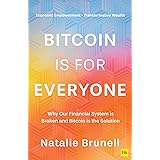The sheer scale of the United States’ national debt is a figure that often defies comprehension, currently standing at an astonishing $37 trillion. As vividly illustrated in the accompanying video, this sum is not just a number on a ledger; it represents the accumulation of decades of government spending exceeding its revenue. To truly grasp its magnitude, imagine stacking $4 trillion in dollar bills; that pile would reach the moon. The US government, in this analogy, owes nine such trips to the moon, a concept almost unfathomable in its scope. This colossal debt isn’t merely a theoretical burden; it profoundly impacts every taxpayer, with a significant portion of our contributions merely servicing the interest, rather than funding essential services or investing in the future. The video succinctly introduces the gravity of this situation and delves into various unconventional proposals, notably “Trump’s Debt Reset Plan,” aiming to address this seemingly insurmountable challenge.
Understanding the Alarming Reality of US National Debt
The current state of America’s finances is a stark reminder of unchecked fiscal habits. Each year, the government collects tax dollars, which are then allocated across crucial sectors such as military, healthcare, welfare, and infrastructure. However, the consistent trend has been one of expenditure far outpacing income, akin to someone continually spending more on their credit card than they earn. Projections for 2025 highlight this concerning gap, with the government expected to spend approximately $7 trillion while only bringing in about $5 trillion. This creates a staggering $2 trillion deficit that will be added directly to the national debt, pushing it even closer to the $40 trillion mark. Such consistent overspending makes the debt virtually impossible to pay off through traditional means, much like an ever-growing credit card balance that becomes increasingly difficult to manage due to spiraling interest.
Furthermore, the Federal Reserve plays a critical, albeit often misunderstood, role in this cycle. When the government cannot finance its spending through taxes or borrowing from the public, the Fed often steps in, effectively printing more money to cover the shortfall. While this doesn’t appear as a direct tax on your paycheck, its impact is far more insidious: inflation. Every dollar printed without a corresponding increase in productivity or goods and services devalues existing currency. This hidden tax erodes the purchasing power of your savings and wages, making everyday necessities like groceries or gasoline significantly more expensive. The video rightly points out that this inflationary spiral is a systematic issue, driving up asset prices and eroding the financial stability of ordinary citizens, silently taxing the American public.
Trump’s Creative Solutions: A New Economic Frontier
Faced with an unprecedented debt crisis, policymakers have been compelled to explore non-traditional avenues for a “debt reset.” The video highlights several bold ideas attributed to “Trump’s executive team,” moving beyond conventional fiscal policies and venturing into the realms of alternative assets. These proposed strategies, primarily focusing on gold re-valuation, a Bitcoin reserve, and US-backed stablecoins, represent a significant departure from standard economic approaches. They seek to leverage existing assets and emerging technologies to bolster the nation’s balance sheet without incurring new debt or directly taxing citizens further, potentially transforming the financial landscape for generations to come.
Gold Re-valuation: A Glimmer from the Past
One of the most intriguing proposals involves re-evaluating the United States’ substantial gold reserves. The US holds an impressive 261 million ounces of pure gold, but on the government’s books, this is still valued at an archaic $42 per ounce, totaling a mere $11 billion. This historical valuation dates back decades and drastically understates its true market worth. Today, gold trades closer to $3,300 an ounce, a price that would instantly re-value the nation’s gold holdings to approximately $860 billion. This re-valuation alone could inject an additional $849 billion into the government’s balance sheet “out of thin air,” without selling a single ounce of gold. The process would involve simply handing the Federal Reserve a certificate reflecting the new, higher value, in exchange for cash that could then be spent.
This isn’t an entirely new concept; President Franklin D. Roosevelt undertook a similar re-valuation in 1934, increasing gold’s price from $20 to $35 an ounce during the Great Depression. This move provided the government with billions in new spending power, which helped to stimulate the economy. While seemingly an elegant solution, relying on gold’s market price carries inherent risks. Should gold prices experience a significant downturn, the government’s balance sheet would shrink, potentially signaling economic weakness. The stability of gold, while historically robust, is not absolute and is subject to global market fluctuations.
The Bitcoin Reserve Strategy: Modern Wealth Seizure
Another forward-thinking component of Trump’s Debt Reset Plan is the establishment of a national Bitcoin reserve. This strategy, reportedly conceived in March 2025, cleverly avoids direct purchases of cryptocurrency by the government. Instead, the plan involves leveraging assets seized from criminal enterprises, such as drug cartels. The US government has already confiscated a substantial amount of Bitcoin, estimated to be between 30,000 and 200,000 coins, from figures like El Chapo and other illicit networks. At a hypothetical $100,000 per coin, this reserve could be valued anywhere from $3 billion to $20 billion.
Crucially, instead of selling these seized assets, as was often done in the past (missing out on an estimated $17 billion in potential gains by selling too early), the proposed strategy is to hold them. By pledging this Bitcoin to the Federal Reserve, much like gold, its market value could be converted into spendable dollars without increasing national debt. This approach hinges on Bitcoin’s long-term value appreciation, transforming criminal proceeds into national assets. Moreover, the video speculates on an even more audacious “checkmate” move: selling off existing gold reserves to invest entirely in Bitcoin. This could simultaneously devalue gold globally, potentially crippling economies like China and Russia that heavily rely on gold reserves, while driving up Bitcoin’s price and strengthening the US’s economic position. Such a high-stakes move, while unlikely, could fundamentally alter global financial dynamics.
The Genius Act: Stablecoins as a New US Currency
The third and perhaps most radical idea in Trump’s economic proposals is the “Genius Act,” signed in 2025, which aims to regulate stablecoins. However, its implications extend far beyond mere regulation. This act would enable the US government to create its own stablecoins, pegged directly to assets like gold or Bitcoin, allowing them to circulate as alternative forms of US currency. Imagine a digital dollar that isn’t just printed into existence, but is backed by tangible, valuable assets. This mechanism could potentially expand the nation’s money supply without accumulating further debt, offering a stable and transparent alternative to traditional fiat currency.
The concept is bold and innovative, yet it raises a multitude of complex questions and considerable risks. What would happen if the underlying assets, whether gold or Bitcoin, experienced a sudden and drastic collapse? Such a scenario could severely undermine the value of these stablecoins, potentially destabilizing the entire US financial system. More broadly, the introduction of an asset-backed digital currency could challenge the traditional role and global dominance of the US dollar. If people lose trust in the stability or backing of this new currency, the dollar’s coveted position as the world’s reserve currency could be jeopardized, leading to profound geopolitical and economic consequences.
The Deeper Implications: Inflation as a Hidden Tax
To fully appreciate the gravity of the proposed “debt reset” plans, it’s essential to understand the historical context of the US dollar’s evolution and the mechanism of inflation. The video references a pivotal moment in 1971 when President Richard Nixon unilaterally severed the dollar’s convertibility to gold, effectively ending the gold standard. Before this decision, foreign nations holding US dollars could demand an equivalent amount of gold from the US Treasury. When France, among others, began to do so, Nixon, fearing a depletion of US gold reserves, decided to close the “gold window.” This move untethered the dollar from any physical asset, transforming it into a purely fiat currency, whose value is derived solely from government decree and public trust.
The abolition of the gold standard granted the Federal Reserve unprecedented power to print money without the constraints of gold reserves. While this provided flexibility to manage economic crises, it also paved the way for inflationary tactics to become a “standard practice” for managing debt. Instead of directly taxing citizens to pay down the national debt, which would likely face widespread public resistance (akin to a modern-day Boston Tea Party), the government can indirectly tax the public through inflation. By printing more money, the purchasing power of every dollar held by citizens decreases. The video highlights a shocking statistic: four out of every ten dollars in circulation have been printed since 2020. This dramatic expansion of the money supply has been a primary driver behind the significant rise in asset prices and the increased cost of consumer goods seen in recent years, making basic necessities more expensive for the average American.
Protecting Your Wealth in a Shifting Landscape
In an economic environment characterized by persistent inflation and an expanding national debt, individuals must proactively safeguard their financial well-being. While specific financial advice should always come from a qualified planner, the video offers a crucial insight for regular folks: diversification. Placing all your savings into a single asset class, especially one vulnerable to inflationary pressures, can be incredibly risky. Instead, spreading investments across various asset types can provide a buffer against economic volatility and the insidious effects of a devaluing currency. This strategy helps to preserve wealth as different asset classes tend to perform differently under various economic conditions.
For many, this means considering a diversified portfolio that includes traditional assets like stocks, which can offer growth potential, alongside alternative assets such as real estate and cryptocurrencies. Real estate, for instance, often acts as a hedge against inflation, as property values and rental income tend to increase with the cost of living. Cryptocurrencies like Bitcoin, while volatile, have shown a historical tendency to appreciate over the long term, making them an attractive, albeit higher-risk, component for some investors looking to protect against the devaluation of fiat currencies. The growing disparity between economic classes underscores the urgent need for individuals to understand these dynamics and take informed steps to protect their hard-earned money from systemic economic challenges. It becomes a matter of financial literacy and strategic planning to navigate a world where traditional economic norms are constantly being challenged.
Ultimately, the discussion around Trump’s Debt Reset Plan and similar innovative financial strategies reflects a deeper societal struggle against a burgeoning national debt and its hidden costs through inflation. The American experiment has always thrived on adaptability and ingenuity in the face of adversity. Whether these proposed solutions involving gold re-valuation, Bitcoin reserves, or US-backed stablecoins prove viable or merely temporary fixes remains to be seen. However, their very consideration highlights a growing recognition among leadership that conventional approaches are no longer sufficient to tackle the colossal financial challenges ahead. The hope is that through such creative thinking and a willingness to explore new frontiers, the nation can secure a more stable economic future, preventing the current debt from becoming an insurmountable burden passed down to future generations.







